Right bite
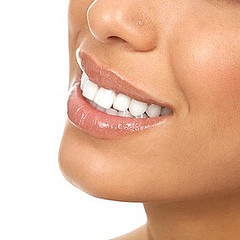
Teeth bite - This is a feature of the closure of the upper and lower jaws.
With a proper bite, the front upper teeth cover the lower teeth by about a third.
The upper row of teeth is in contact with the lower row of the same name.
There are no gaps between the teeth in the row.
Moreover, the midline of the face passes between the central incisors of the upper and lower dentition.
Such a bite is considered normal (physiological).
The correct bite gives the face harmony, makes the smile irresistible, and the process of chewing food is effective.
Based on statistical data, it was found that the correct bite in humans occurs only in 10% of cases.
How to determine
Only a specialist can determine exactly whether the bite is correct or not.
Knowing the characteristics of the physiological bite, a person can independently evaluate it and, if necessary, consult an orthodontist.
To understandwhether the bite is correct, it is necessary, first of all, to pay attention to the face:
- If the occlusion is correct, then the oval of the face should be harmonious.
- The lower part of the face with a normal bite is completely symmetrical.
- The midline of the face passes clearly between the first incisors of the upper and lower dentition.
Visually physiological bite is as follows:
- The teeth in the upper and lower rows are tightly pressed against each other and are located on the same line.
- There are no gaps between the teeth, as well as crooked teeth.
- The upper incisors slightly cover the lower ones.
The reason for visiting the dentist may also be:
- Increased plaque deposition on some teeth. This is due to insufficient chewing load on this group of teeth.
- The presence of bleeding gums.
- If there is a hissiness. If the child has a violation of diction, then it must be shown to the orthodontist.
Video: “What is a right and wrong bite?”
Kinds
Doctors orthodontists distinguish the following options for the correct bite:
- Orthognathic bite - is ideal in terms of aesthetics. The upper row of teeth throughout slightly overlaps the lower. The maxillary incisors no more than 1/3 overlap the crowns of the mandible incisors. This type of closing of teeth maximally provides swallowing, chewing and speech functions. In fact, an orthognathic bite practically does not occur.
- With the progenic type of occlusion, a slight extension of the lower jaw is observed. This bite is a borderline condition between the norm and the anomaly.
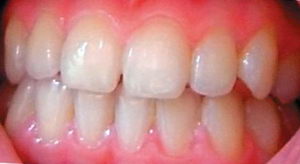
Photo: Direct bite - If the upper and lower incisors are joined by cutting edges, then we are talking about a direct bite. However, with such a bite, the possibility of rapid erasure of the teeth is not excluded.
- In the presence of a bioprognathic bite, which is similar to orthognathic, a pronounced inclination of the teeth of the upper and lower jaws in the front direction is observed.
All of the above varieties of the correct bite ensure the physiological functioning of the dentition.
Avoid malocclusion
The formation of a bite in a person begins from birth and lasts until about fifteen years.
Therefore, it is during this period that it is important to pay special attention to the prevention of malocclusion in a child.
- It is important that from the first birthdays the baby is breastfed.
- Do not abuse the dummy, which is so loved by young children.
- By two years, the child should be completely rid of bad habits (sucking fingers, toys, and other objects).
- During sleep, the child should be in the correct position. You can not let the baby sleep with his mouth open and his head thrown back.
- If the child has breathing problems, he often wakes up or snores in a dream, you should contact not only the pediatrician, but the dentist.
- An important point is the nutrition of the child. At the end of the formation of the milk bite, solid food should be present in the child’s diet.
- You can not ignore ENT diseases, especially if the child breathes through the mouth.
- Such diseases as rickets, tuberculosis, dyspepsia negatively affect the development of the dentition.
- During the period of a removable bite, it is important to monitor the hygiene of the oral cavity, timely treat milk teeth. It is very important that they serve their due date.
- Attention must be paid to the prevention of scoliosis in children.
How to fix a bite
If the wrong bite is found, then you need to consult an orthodontist.
An orthodontist with the help of special orthodontic appliances will create optimal conditions that will help to correct the incorrect closing of the jaws.
Orthodontic devices can be either removable or non-removable. Removable can be put on and removed on their own, fixed constructions put on and removes the orthodontist.
- If the pathology of the bite is insignificant, then the correction is carried out using plates or removable mouth guards.
- In more complex cases, braces are used. They are set by a doctor. With the help of bracket systems, the teeth become smooth and the malocclusion is eliminated.
- In advanced cases, resort to surgical intervention.
Before and after photos
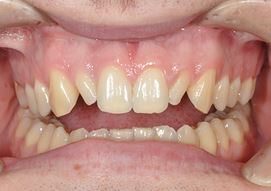 |
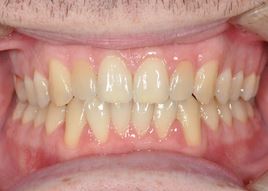 |
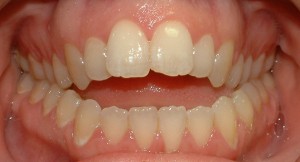 |
 |
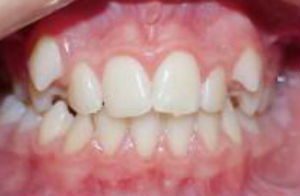 |
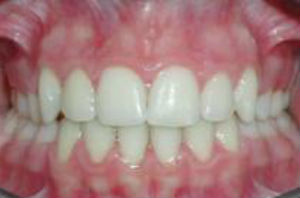 |